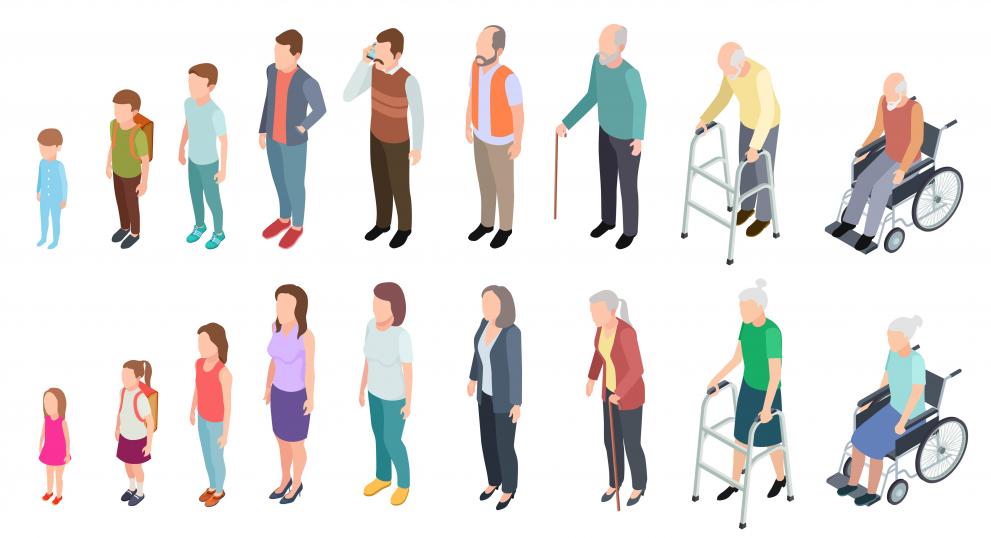
The EU’s health and long-term care workforce will need to grow by 11 million workers between 2018 and 2030 to meet the demands of an ageing population, according to a JRC report.
The report analyses the EU’s changing demography and the impact on demand for health and long-term care.
It finds that the rise in the number of older people has been increasing the demand for these services, generating a rising demand for a qualified workforce.
Much of that demand is being met by domestic education and training, while migration from third countries and intra-EU mobility also has an increasingly important role to play.
In 2018, there were almost two million health and long-term care workers in the EU working in a different country than the one they were born in.
While the number of these foreign-born workers has grown in recent years, as a percentage of all health workers (13.2%), it is significantly lower than in some other countries, such as the UK or USA. These workers are also not spread evenly, with more than two thirds employed in only five EU countries: Germany, Italy, Sweden, France and Spain.

The report identifies several challenges that, if addressed, can help to encourage mobility and unlock the full potential of migration from third countries to contribute to alleviating the pressure of workforce shortages in these sectors. These challenges include:
- There is currently no specific EU sectoral labour migration instrument or tool to attract foreign health and long-term care workers. This means that potential workers must navigate the diverse skills and employment profiles that exist across the EU, and that specific migration channels for long-term care workers do not exist;
- Migration requirements often include the recognition of qualifications as a prerequisite for exercising regulated health care professions. The complex procedures associated with this pose a challenge in a context in which the health-related education and training programmes considerably differ from those in the EU;
- Long-term care workers, while sometimes not in need of formal qualifications, perform tasks involving a set of informal skills that is difficult to assess. The absence of specific assessment tools may also discourage recruitment;
- International partnerships for the recruitment of health and long-term care personnel still remain limited in numbers and scope.
The report authors recommend integrating current labour migration channels with more specific considerations for the health and long-term care systems, while remaining in line with the WHO Global Code of Practice.
This could foster migration back and forth, yielding benefits both for countries of origin and of destination. It would also imply the facilitation of the recognition of qualifications and the full activation of skills of the migrant and mobile workforce in the EU.
Background
One fifth of the EU population is currently above 65 years of age. On average, the elderly population has a remaining life expectancy of 20 years, but half of that time is spent in poor health.
One of the major challenges of the rising number of older people for the EU’s health sector is the growing demand for chronic disease treatments. At the same time, the EU’s long-term care sector is facing an increasing number of older people with care needs.
This report offers scientific insights into the main demographic and migration-related elements that, within the context of the EU’s ageing society, should be accounted for in order to have efficient workforce planning in health and long-term care sectors.
Planning a workforce that has the size and skills suitable to satisfy the demand is a challenging task, given the numerous and often interrelated factors in play.
These factors range from the demographic and health characteristics of a population, a country’s economic growth, technology, the migration of health and long-term care professionals, to education and retirement policies.
This implies a need for a holistic approach in workforce planning, capable of incorporating and coordinating various policy domains at local, national and EU level.
The Commission has taken a series of policy initiatives to support EU countries to address the challenges of an ageing population and the impact on the health and long-term care sectors.
This includes the first steps towards building the European Health Union and the ‘Pact for Skills’ set out in the European Skills Agenda. The Green Paper on Ageing opened a wide public consultation on a range of questions, including on how to build resilient health and long-term care systems.
Another important initiative coming this year is the Action Plan to implement the European Pillar of Social Rights. The Pillar provides a compass to tackle the social and economic challenges of our time, including demographic change.
Related Content
GREEN PAPER ON AGEING - Fostering solidarity and responsibility between generations
Details
- Publication date
- 25 February 2021
